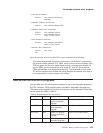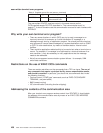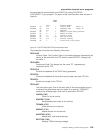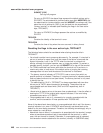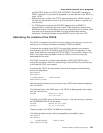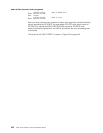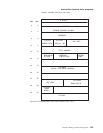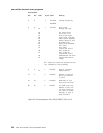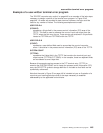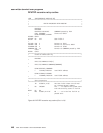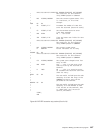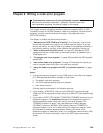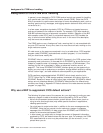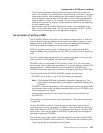Example of a user-written terminal error program
The “DFHTEP recursive retry routine” on page 446 is an example of the logic steps
necessary to design a portion of the terminal error program. In Figure 23 on
page 446, 10 retries are provided for each terminal; however, the logic could be
used for any number of retries. The following assumptions are made:
USER FIELD A
(PCISAVE)
represents a 6-byte field in the process control information (PCI) area of the
TCTTE. This field is used to preserve the count of input and output from the
TCTTE when the first error occurs. These counts are contained in 3-byte fields
located at TCTTENI and TCTTENO within the TCTTE.
USER FIELD B
(PCICNT)
represents a user-defined field used to accumulate the count of recursive
errors. It should be in the process control information (PCI) area of the TCTTE.
SYSTEM COUNT
(TCTTENI)
represents the 6-byte field in the TCTTE that contains the terminal input and
output counts (TCTTENI+TCTTENO). In the example, these two adjacent fields
are considered as one 6-byte field.
Because this example requires access to the TCT terminal entry (TCTTE) to
examine the SYSTEM COUNT and to locate the process control information (PCI)
area, the DFHTCTTE symbolic storage definition is included so that fields can be
symbolically referenced.
Note that the code in Figure 23 on page 446 is intended only as an illustration of a
recursive error handling technique and of the steps necessary to establish
addressability to the applicable control blocks.
user-written terminal error programs
Chapter 8. Writing a terminal error program 445



